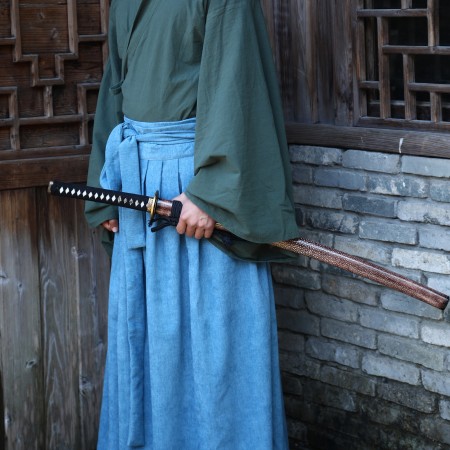
In the realm of weaponry, few have captured the collective imagination like the ninja sword. The enigmatic world of ninjas, shrouded in shadows and mystery, has not only spawned legends but has also left an indelible mark on popular culture. At the heart of this intrigue lies the iconic ninja sword—an embodiment of stealth, precision, and lethal prowess. This article embarks on a journey through time to explore how the ninja sword has transitioned from cinematic dreams to tangible artifacts in museums, leaving an enduring cultural impact.
Forging Legends on the Silver Screen
Cinematic narratives have played a pivotal role in shaping the global perception of ninjas and their weapons. Movies like “Enter the Ninja,” “Ninja Assassin,” and the revered “Ninja Scroll” have brought the art of ninjutsu and the lethal elegance of the ninja sword to the silver screen. These films crafted an image of ninjas as shadowy warriors, wielding their swords with masterful precision. This portrayal not only sparked interest in martial arts but also fueled the worldwide fascination with the ninja sword’s mystique.
Evolution of Pop Culture
The influence of movies did not remain confined to the theater. The ninja sword’s cinematic popularity spilled over into broader pop culture, catalyzing a wave of trends and aesthetics. The sword’s portrayal in movies led to the emergence of ninja-themed merchandise, fashion, and even video games. Symbols of ninjas—complete with their swords—appeared on clothing, accessories, and collectibles. This cultural evolution highlighted the power of the sword as an emblem of resilience, skill, and covert power.
Ninja Sword in the Artistic Realm
Beyond the silver screen, the ninja sword’s cultural impact extended to literature and visual arts. Novels and graphic novels, such as Eric Lustbader’s “The Ninja” and the “Teenage Mutant Ninja Turtles” comics, showcased the weapon’s significance. These narratives transformed the sword into a literary motif, exploring themes of honor, loyalty, and the duality of light and darkness. Artists, too, found inspiration in the blade’s form, using it as a canvas to explore the contrasts of strength and subtlety.
From Fantasy to Reality
Intriguingly, the journey of the ninja sword did not end in the realm of fantasy. Authentic ninja swords have found their way into museums and exhibitions around the world. These artifacts provide tangible connections to history and serve as educational tools. Museums, such as the Iga-ryu Ninja Museum in Japan, display genuine ninja swords, shedding light on the historical context in which they were wielded. The inclusion of these artifacts in museums bridges the gap between myth and reality, enabling visitors to touch a piece of history.
Cultural Reflections and Global Influence
The cultural impact of the ninja sword is a reflection of the timeless themes it embodies. The sword represents not only the skillful execution of martial arts techniques but also the allure of secrecy, discipline, and unparalleled dedication. Its global fascination transcends geographical boundaries, resonating with cultures across the world. The ninja sword’s popularity highlights humanity’s universal yearning for the extraordinary—the melding of skill, mystique, and heroism.
The journey of the ninja sword from movies to museums is a testament to its enduring appeal. It embodies the fusion of fact and fiction, weaving together historical context and cinematic allure. Through movies, pop culture, literature, and museum exhibits, the ninja sword has transcended its origin, becoming a symbol that unites generations under the banner of martial prowess and enigma. In the end, the ninja sword’s cultural impact illuminates the power of storytelling, reminding us of our shared fascination with the timeless dance of light and shadow.
